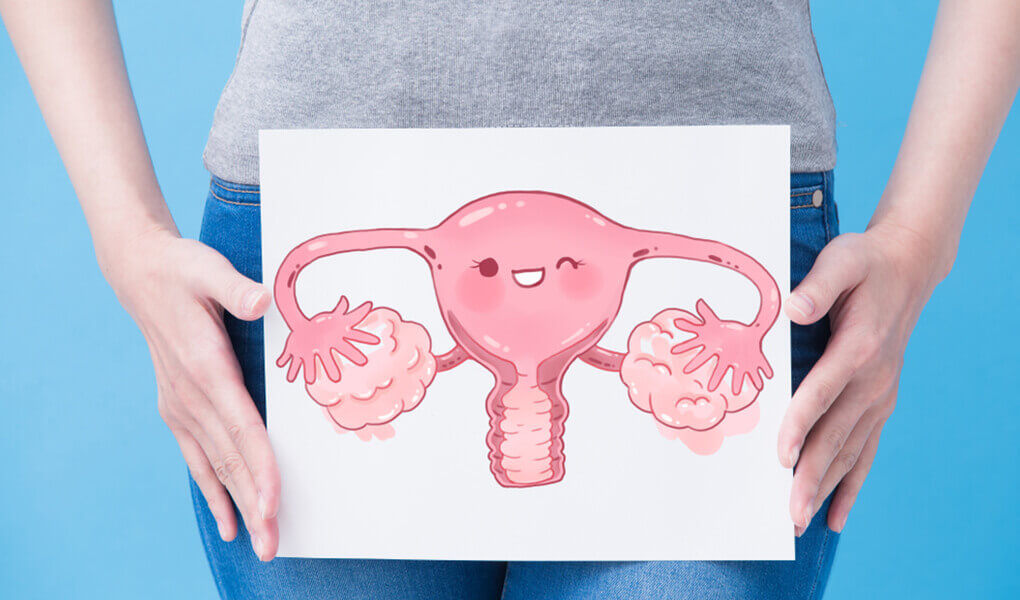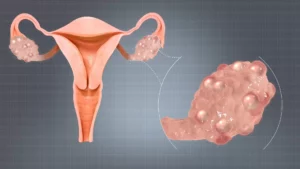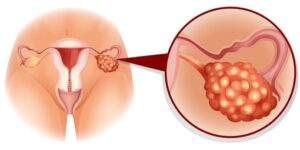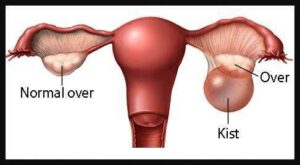
Usually in women between the ages of 20-45 ovarian cyst is seen more. Because the ovaries are actively used in this age range. These cysts, which are initially seen as benign, can rarely turn into cancer. Because they have a small structure, symptoms may not be visible. Some ovarian cysts may heal on their own. For the treatment of ovarian cyst, first the size and type of the cyst is determined. If the cyst does not harm the person's health, doctors observe the patient for an average of 3 months.
If necessary, during the observation period ovarian cyst treatment begins to be implemented. If the ovarian cyst grows, surgery is required because serious problems will occur. Large cysts are often more likely to be malignant. Laparotomy treatment is applied to people with this situation. In addition, laparoscopy treatment is also used in the treatment of small and benign cysts.
Symptoms of Ovarian Cyst
Ovarian cysts have many symptoms, but they can also be asymptomatic. Small-sized and benign cysts may rarely cause symptoms. Symptoms caused by ovarian cysts include pain in the groin, menstrual irregularity, nausea, breast tenderness, infertility, painful menstrual period, painful sexual intercourse, excessive hair growth, constipation. ovarian cyst It may be a harbinger. For a definitive diagnosis, a specialist doctor should be consulted.
Why Does Ovarian Cyst Occur?
Cysts occurring in the ovaries may not always be malignant. Cysts, which can also be benign, can be monitored or surgically removed. Ovarian cysts, which occur spontaneously during ovulation or during the menstrual cycle, often resolve spontaneously and are benign. Benign ovarian cysts are known as “functional cysts.” Follicular cysts of 3-10 cm and larger size, which occur as a result of fluid accumulation due to lack of ovulation, are also included in this group. The ultrasonographic image of this type of cyst is a clear, free-flowing tumor without cauliflower-shaped protrusions, indicating that it may be a benign functional cyst. this type ovarian cyst Instead of deciding on surgery, priority will be given to follow-up in the next menstrual period.
How Many Types Are Ovarian Cysts?
1-Inclusion Cyst: It is a non-functional cyst. It is usually small in size. It does not cause any symptoms and cannot be detected on ultrasound. Some researchers think these tiny cysts may be a long-term sign of ovarian cancer..
2-Follicle Cyst: In other words, it is most common in young individuals. ovarian cyst is the type. They don't usually cause symptoms, but they can delay menstruation. This is because the developing egg does not crack and continues to grow. Their size is usually 2-3 cm and does not require treatment. They do not cause any complications. Sometimes birth control medications can be used to shrink the cyst.
3-Corpus Luteum Cyst: After each ovulation, the tissue from which the egg is taken differentiates and turns into a tissue called corpus luteum, and in case of pregnancy, progesterone is produced from here until it is released from the placenta. Sometimes this tissue takes the form of a cyst and is called a corpus luteum cyst. It is usually 3-4 cm in size. It can delay menstruation because it secretes hormones. If no complications develop, there is no need for treatment. It may disappear on its own.
4-Theca Lutein Cyst: It is often seen bilaterally in people receiving infertility treatment due to excessive secretion of hormones. Bed rest and follow-up are required for treatment.
5-Gestational Luteoma: It is a cystic structure seen during pregnancy and can sometimes be up to 20 cm long. It regresses towards the end of pregnancy.
What Causes Ovarian Cyst?
Some of the occurrences of ovarian cysts are as follows:
- being overweight,
- Irregular period,
- Pelvic infections,
- hormone disorders,
- Due to reasons such as inadequate functioning of the thyroid glands ovarian cyst can be seen.
Ovarian Cyst Explosion
As ovarian cysts develop, the fluid inside them also increases. After a while, this fluid squeezes the wall of the cyst and tears it. to ovarian cyst It leads. Time passed under this discomfort, sex etc. Several factors come into play.
When a small cyst ruptures, the person may not notice it and survive, but if the cyst grows or the tumor ruptures and causes continuous bleeding, the person may experience severe pain, loss of consciousness or fainting, and nausea. Although this case is rare, it is very likely that the life of the patient with a ruptured ovarian cyst is in danger.
ovarian cyst Patients who know that they have symptoms should see a doctor as soon as these symptoms appear and receive urgent intervention. The diagnosis of whether an ovarian cyst has ruptured or not can be easily made by normal examination or ultrasound. If the explosion is not advanced, observation and supportive treatments; If it is life-threatening, it is best to intervene with surgery.
Ovarian Cysts Treatment Methods
Ovarian cyst treatment It varies depending on the type of cysts. Simple cysts are usually monitored and birth control pills used to shrink them. Antibiotic treatment is preferred for inflamed cysts. Cysts that are larger than 8-10 cm or continue to grow and are malignant on ultrasound and blood tests should be surgically removed.
What are the Main Surgical Treatments for Ovarian Cysts?
The surgical approach is chosen according to the size of the cyst, ultrasound image, and whether the cyst is benign or malignant.
Laparoscopy
If the tumor is small and appears benign, diagnostic laparoscopy alone or additional surgery may be necessary. Intra-abdominal reconstruction is based on special thin surgical instruments and a telescopic system of these incisions, using one or two smaller incisions just below the navel and in the abdomen. It is possible to remove the cyst with this method. This method is less painful and the hospital stay and return to work are shorter. Aesthetically, the results are better than open surgery.
It is the method used to remove large cysts and cysts that may be malignant. If necessary, the ovaries may need to be removed along with the cyst during the surgery.
How to Treat Ovarian Cyst?
Treatment of ovarian cysts is a process determined by the symptoms seen in the patient. In cases where a cyst does not cause any symptoms or discomfort, just regular checkups are sufficient to monitor the cyst. However, when symptoms such as menstrual irregularity occur in the patient, it is necessary to resort to treatment methods.
Drug therapy to maintain hormonal balance is the most commonly used method in the treatment of ovarian cysts. In this method, birth control pills are often used to regulate the menstrual cycle. As the hormonal balance is restored, the cysts in the ovaries will shrink and disappear over time.
Large cysts or cysts that tend to grow continuously may require surgery under regular monitoring. Cysts that are up to 8-10 cm long and cause severe pain to the patient can be surgically removed.
Criteria for Dividing Benign and Malignant Ovarian Cancers
Benign Cysts:
- Cystic appearance,
- properly limited,
- mobile, mobile,
- One sided,
- They are smaller than 6 cm.
Malignant Cysts:
- In solid appearance,
- Its borders are irregular,
- sticking around,
- Double-sided,
- They are larger than 6 cm.
When is Ovarian Tumor Dangerous?
Tumors found in the ovary may vary depending on their type.
- It is very important to distinguish between benign and malignant “cancerous” cysts, which are a well-known type of ovarian cysts. Age is the determining factor here; because the risk of these tumors turning into cancer increases with age.
- Mezotelium adı verilen epitelyal tabaka, yumurtalık yüzeyini ve karın zarını kaplar. Bu tabakadan daolyı oluşan tümörlere epitelyal tümör adı verilir. Tüm yaş gruplarında en çok rastalanan tümörlerdir. Yumurtalık kistlerinin yaklaşık %60-70’i bu tabakadan oluşur. Epitelyal tümörler iyi huylu veya kötü huylu olarak ikiye ayrılır.
- Epitelyal olmayan grup, germ hücreli tümörler ve seks kord-stromal olarak sınıflandırılır. Germ hücreli tümörler yumurta hücrelerinden kaynaklanır. Yumurta ile epitelyal hücreleri arasındaki boşluktan kaynaklanan ve hormon üreten hücrelerden oluşan tümörlere seks kord-stromal denir. Germ hücreli tümörler tüm yumurtalık kistlerinin yaklaşık %15-20’sini ve stromal tümörlerin yaklaşık %8’ini oluşturur.
When Should Ovarian Cyst Be Operated?
- If the mass is solid or semi-solid,
- Cysts after menopause or before the first menstrual period,
- A cyst that is larger than five centimeters and persists despite observation or suppression with birth control pills,
- Cyst that is malignant or at risk of becoming cancerous,
- When there is a fast growing cyst,
- When there are signs of ascites and metastasis in the pelvis
- In case of torsion, surgery must be performed.
Age Factor in Ovarian Cancer
Regardless of the type, age is the most important factor in deciding to have ovarian cyst surgery. in the USA ovarian cyst sorunu olan 1200 kişinin patolojisi üzerinde yapılan bir çalışmada, 20 yaş altı ve 40 yaşına kadar cerrahi olarak çıkarılan tümörlerde kanser olma olasılığının yaşlar arasında %7 ve %30 olduğu bulunmuştur. Elli yaşından sonra bu oran yükselir.
What is Polycystic Ovary?
If there are more than 12 follicles in an ovary, it is polycystic ovary. Surgical treatment is not applied to people with multiple cysts. If the patient has polycystic ovary syndrome symptoms such as increased hair growth, menstrual delay, lack of ovulation, and acne, medication, diet, and exercise are recommended.
What to Pay Attention to During Ovarian Cyst Surgery?
The surgical method of ovarian cysts is decided according to the age of the patient and the shape of the ovarian cyst. In cases where it is unclear whether the ovarian cyst is malignant or not, laparoscopic or robotic surgery is preferred. In this method, the cyst is evaluated by entering the abdominal cavity from three points.
ovarian cyst If it is considered benign, it is enough to remove the cyst without touching the ovary and take it to the doctor. In case of cancer, only cancerous ovarian tissue is removed and staged surgery is performed on young women who are in the early stages and want to become pregnant. In advanced stages, the tissues where the cancer has spread are removed together with the ovaries through open surgery.
Do Ovarian Cysts Become Cancer?
Ovarian cysts are usually benign. There are some tumor markers called tumor markers that appear in old age, are bilateral, solid, adherent, have an irregular surface and tend to grow rapidly, have a large number of solid parts, cause fluid accumulation in the abdomen, and do not go away naturally after surgery. Surgery is recommended in cystic forms with high blood counts due to the risk of malignant cysts. The results of examination and ultrasound help to raise suspicion.
If ovarian cysts are suspected to be cancerous, surgery should be performed immediately by an experienced gynecologist and in a center with rapid tissue diagnosis.
Frequently Asked Questions About Ovarian Cyst
1-When Does Ovarian Cyst Cause Pain?
Ovarian cysts do not usually cause severe pain. Sudden pain in the groin may occur when sitting or when the knee is pulled towards the abdomen. If the cyst ruptures or the cyst returns on its own, it can cause severe pain in the groin and abdomen.
2-How to Understand Ovarian Cyst Burst?
If the ruptured cyst is on a blood vessel, bleeding can be quite severe. Symptoms such as abdominal pain, bloating, fainting, blackout and low blood pressure are symptoms of a bleeding cyst.
3-Does a benign ovarian cyst turn into a bad one?
Ovarian cysts can be classified as benign or malignant according to their type. Ovarian cysts, which are benign and do not pose a risk of cancer, but cause various problems, also stand out with their symptoms.
4-Does Ovarian Cyst Turn into Cancer?
Most ovarian cysts are not cancerous. If ovarian cysts occur after menopause, this possibility should be kept in mind. Menopause marks the time when a woman stops menstruating. However, if cysts form after menopause, they have a higher chance of becoming cancerous.
5-Are Ovarian Cysts Harmful?
Most ovarian cysts are benign and resolve on their own without treatment. These cysts cause symptoms if present. However, in very rare cases, a cancerous ovarian cyst may be discovered during a routine examination.
6-What Causes Ovarian Cysts?
The most common cause of ovarian cysts; are hormonal disorders. Normally, during each menstrual period, a tumor called a follicle forms in the ovaries, which carries it to the ovary and can reach a size of 3 cm. The cyst then burst and the egg was released.
7-Who Gets Ovarian Cyst?
Ovarian cysts are often found in menstruating women. It is less common in young girls who have not yet started menstruating or in postmenopausal women. Women with a family history of ovarian and uterine cancer are also at risk.





